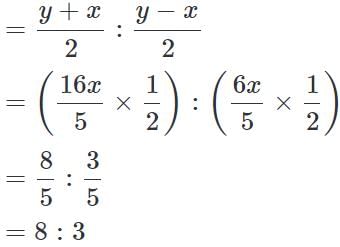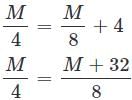MCQ Test: Boat and Stream- 1 - Bank Exams MCQ
20 Questions MCQ Test - MCQ Test: Boat and Stream- 1
Directions: Study the following questions carefully and choose the right answer.
A boat takes 19 hours for travelling downstream from point A to Point B and coming back to a Point C midway between A and B. If the velocity of the stream is 4 kmph and the speed of the boat in still water is 12 kmph, what is the distance between A and B?
Directions: Study the following questions carefully and choose the right answer.
In stream running at 2 kmph, a motorboat goes 6 km upstream and back again to the starting point in 33 minutes. Find the speed of the motorboat in still water.
| 1 Crore+ students have signed up on EduRev. Have you? Download the App |
Directions: Study the following questions carefully and choose the right answer.
A man can row 18 kmph in still water. It takes him thrice as long to row up as to row down the river. Find the rate of stream.
Directions: Study the following questions carefully and choose the right answer.
Speed of a boat in still water is 8 kmph and speed of stream is 1.5 kmph. A man rows to a place at a distance of 61.75 km and come back to starting point. The total time taken by him is:
Directions: Study the following questions carefully and choose the right answer.
If a man rows at the rate of 5 kmph in still water and his rate against the current is 3.5 kmph. then the man's rate along the current is:
A boat can travel with a speed of 13 km/hr in still water. If the speed of the stream is 4 km/hr, find the time taken by the boat to go 68 km downstream.
A boat running upstream takes 8 hours 48 minutes to cover a certain distance, while it takes 4 hours to cover the same distance running downstream. What is the ratio between the speed of the boat and speed of the water current respectively?
In one hour, a boat goes 11 km/hr along the stream and 5 km/hr against the stream. The speed of the boat in still water (in km/hr) is:
The speed of a boat in still water in 15 km/hr and the rate of current is 3 km/hr. The distance travelled downstream in 12 minutes is:
A man can row at 5 kmph in still water. If the velocity of current is 1 kmph and it takes him 1 hour to row to a place and come back, how far is the place?
If a boat goes 7 km upstream in 42 minutes and the speed of the stream is 3 kmph then the speed of the boat in still water is:
A man can row upstream at 7 kmph and downstream at 10 kmph. Find man's rate still water and the rate of current.
A boat covers 24 km upstream and 36 km downstream in 6 hours while it covers 36 km upstream and 24 km downstream
in 61/2 hours. The velocity of the current is:
A man can row 15/2 kmph in still water, if the river is running at 1.5 km an hour. It takes him 50 mins to row to a place and back, how far off is the place?
A man can row 40 km upstream and 55 km downstream in 13 hours, also he can row 30 km upstream and 44 km downstream in 10 hours. Find the speed of the man in still water and the speed of the current.
A boatman goes 2 km against the current of the stream in 1 hour and goes 1 km along the current in 10 minutes. How long will it take to go 5 km in stationary water?
Speed of a boat in standing water is 9 kmph and the speed of the stream is 1.5 kmph. A man rows to a place at a distance of 105 km and comes back to the starting point. The total time taken by him is:
A man rows to a place 48 km distant and come back in 14 hours. He finds that he can row 4 km with the stream in the same time as 3 km against the stream. The rate of the stream is:
A man can row 6 km/hr in still water. If the speed of the current is 2 km/hr he takes 4 hours more in upstream than the downstream. The distance is?
The speed of a boat along the stream is 12 km/hr and against the stream is 8 km/hr. The time taken by the boat to sail 24 km in still water is?




































